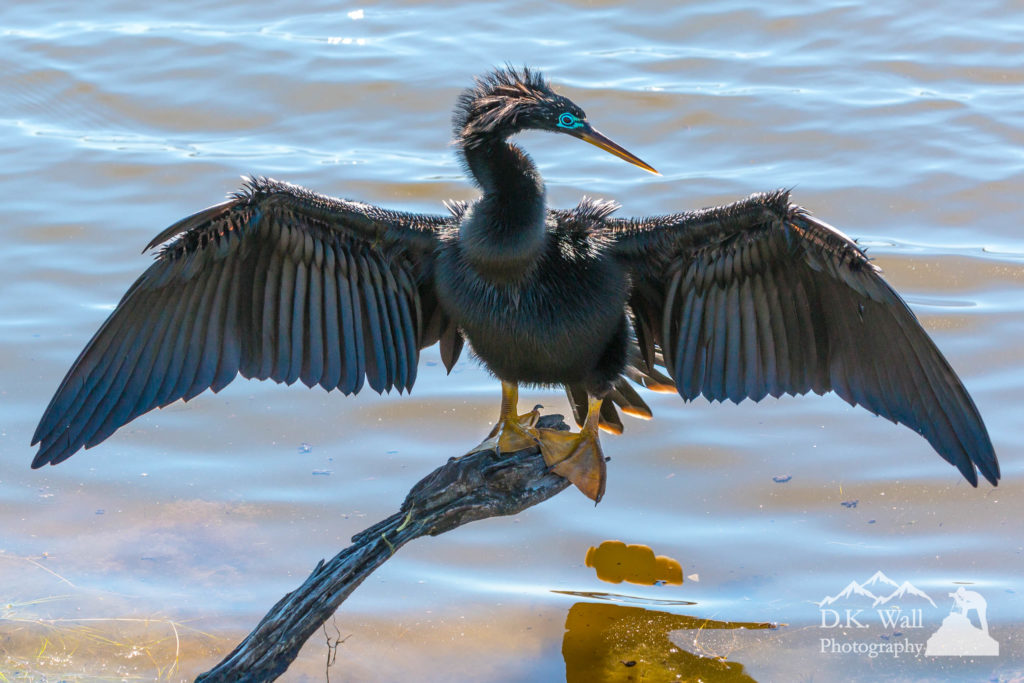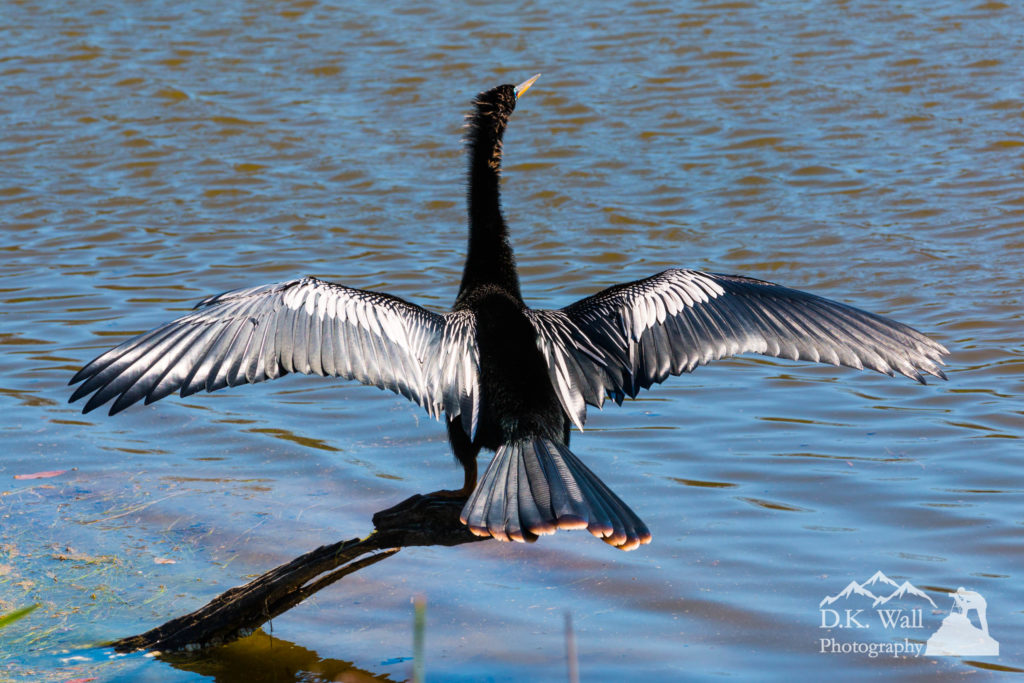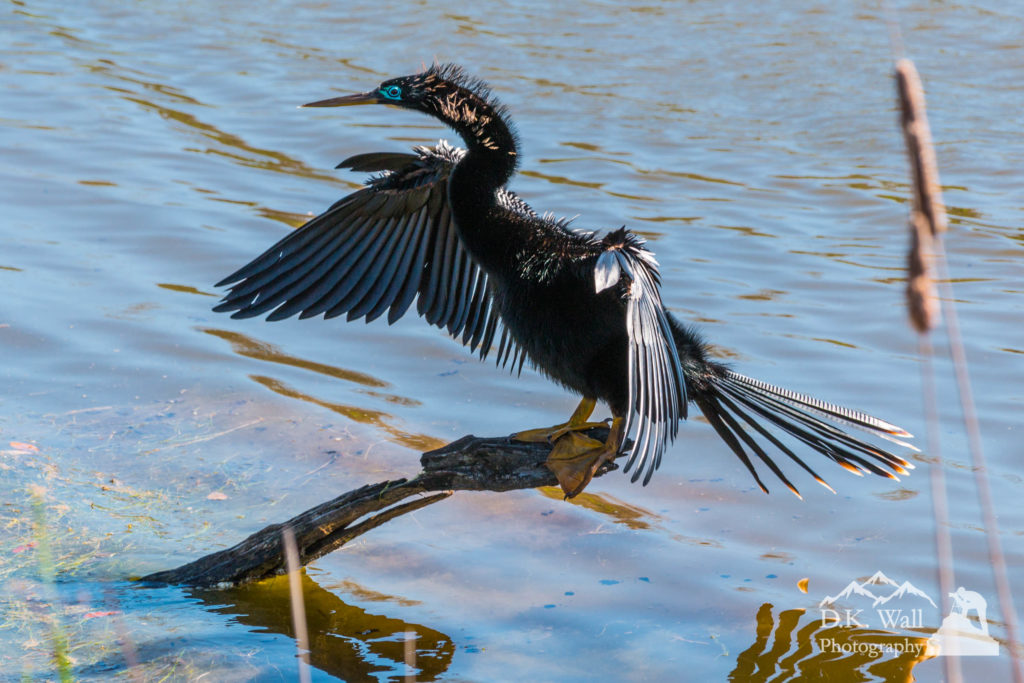During our recent visit to Huntington Beach State Park, I photographed this anhinga drying his wings. And then I found out why he does that.
While I enjoy the grace and beauty of birds, I freely admit that I am not a birder. After capturing the photographs in this post, I began researching to identify the bird. In fact, I am sure that others reading this post can provide far more information than I can.
As always, research is always rewarding from the many things to be learned. For example, that sharp beak and long neck? Since an anhinga is not a particularly fast swimmer, that long neck provides the quick strike and the beak impales the fish.
Which leads to the drying wings.
Turns out that the anhinga has a low metabolic rate and a high rate of body heat loss, so spreading those black wings maximizes sun and heat absorption. And, unlike a lot of waterfowl, the anhinga does not have waterproof feathers and can not fly particularly well with wet feathers.
As always, you can click on any of the above photographs to view a large image.




Beautiful bird ❤️
Great shots and beautiful bird.